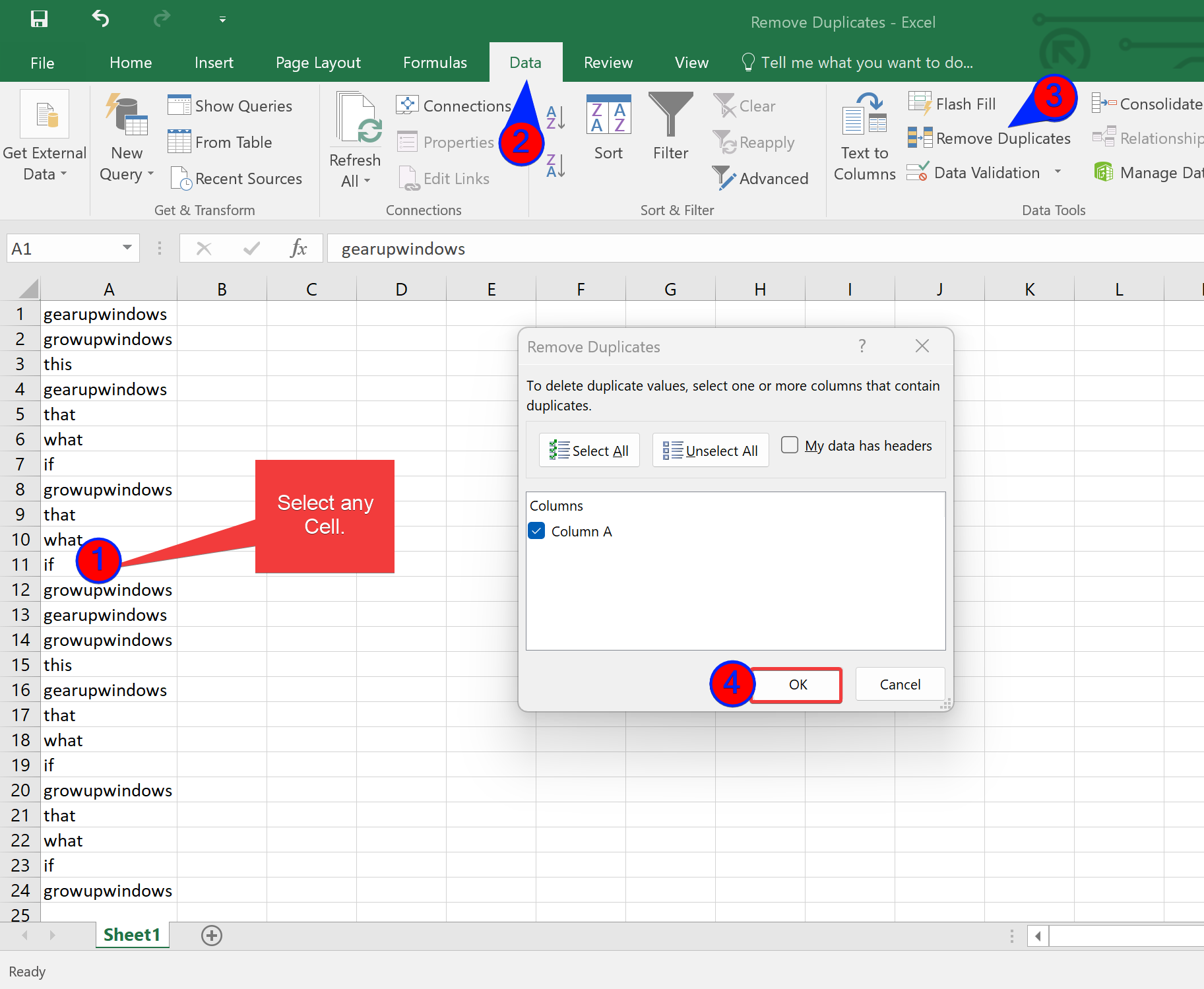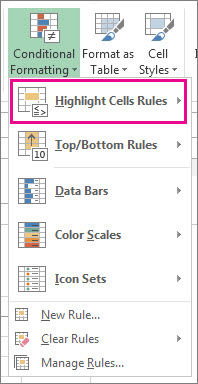
Apply a formula-based conditional formatting rule (based on that formula) to your data set. Create a formula that will return TRUE if all the cell values in the current row are identical to those in the row above and FALSE. You must sort the data in a way that groups the duplicate records. This method is like the previous one, but it allows you to highlight the entire duplicate rows. Well… it gets even better so keep reading. Your spreadsheet looks much cleaner and more impressive. The concatenated text strings in column H are now hidden, the conditional format shows you rows containing duplicate records. In the formatting-code box Type (three semicolons).Īgain, the picture below shows you step-by-step instructions…. Click on the Number tab and then on Custom. You can use Ctrl+1 shortcut, or click on the number-format dialog box launcher button. Why not hide them with custom number formatting code. Now… you don't want the long concatenated strings of combined columns displayed in the new duplicates-marker column. Step 3: Apply Custom Number Format to Hide Concatenated Values These steps are already familiar, and a picture is worth a thousand words, so here it goes… Step 2: Apply Conditional Formatting to Highlight Duplicates If you can't find it, use one of the other two options, the older CONCATENATE function or the & (ampersand operator) formula. NOTE: The CONCAT function shown in cell H4 is the easiest to use in this case. Here's a screen shot that shows the exact formulas: This operation is called concatenation and you can do it using either the CONCATENATE or CONCAT function (you can also use a formula based on the & ampersand or concatenation operator). In this step, insert a new column in your dataset and create a formula that combines values from all the columns you want to use for identifying duplicate records. Step 1: Create a New Column and Fill it With a Concatenation Formula Second, apply conditional formatting to that column. The next technique uses three main steps… Mark Duplicates With a Formula and Conditional Formatting Like… what if you want to teach Excel to find duplicates in two columns or three or more? Kind of like the Remove-Duplicates command that uses multiple columns to find duplicates but without deleting them.ģ. I know… this technique can make Excel find duplicates in a column, and display them, it does not solve the real problem. NOTE: You can use this tool not only to highlight duplicates but also to highlight unique values. You can follow the numbered instructions on the picture below: Select the style you want to use for highlighting cells with duplicates and click OK. Go to Home>Conditional Formatting>Highlight Cells Rules>Duplicate Values. Select the range with suspected duplicates. The easiest example is when you are comparing values in individual cells in a range. Highlight Duplicates With Conditional FormattingĮxcel conditional formatting is a great way to identify duplicates. Great question! It brings me to the second option…Ģ. Now you may stop and think… it's all great stuff, but what if I don't want to delete the duplicates, I just want to find them on the screen? If you forget to check-mark a column that should be included, you'll lose data. If you include a column with unique values for each record, there will be no duplicates. 

It's very important to select the right combination of columns that define the duplicates.The answer is simple: The topmost duplicate!Įxcel sifts through data line by line starting at the top and moving down the dataset, and if it discovers a row with the exact data that it has already “seen,” it deletes it. The question is, which one of them does it keep? Excel keeps one duplicate and deletes the rest.

The screenshot image below shows you the steps:Īfter you click OK… Excel removes duplicates and shows you a confirmation dialogue box, telling you how many duplicates it found and removed: In the dialogue box that pops up, select the columns that identify duplicate rows.Click on the Remove Duplicates button (it's on the Data Tools group of commands).
 Click anywhere in your data (or select the entire data set). If you want to eliminate duplicates from your dataset, take advantage of the built-in “Remove Duplicates” command on the ribbon: Watch this video tutorial to get started… In this tutorial, I'll show you a few simple tips and tricks that you may find very cool and practical.
Click anywhere in your data (or select the entire data set). If you want to eliminate duplicates from your dataset, take advantage of the built-in “Remove Duplicates” command on the ribbon: Watch this video tutorial to get started… In this tutorial, I'll show you a few simple tips and tricks that you may find very cool and practical. #Excel find duplicates in a column how to
If you use Microsoft Excel, you need to learn how to identify duplicates in columns or rows of data. Tutorial Teaching How to Identify Duplicates in Excel








 0 kommentar(er)
0 kommentar(er)
